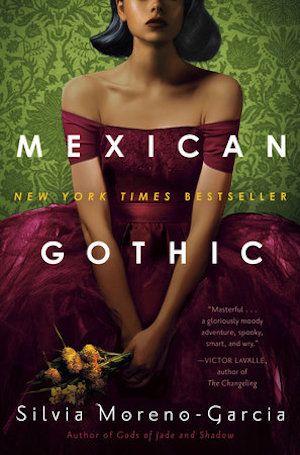Unsettling Reading: Why Are Darker Women’s Stories Growing in Popularity?
Trends in fiction are often a contentious topic. How many times have we heard “YA is dead” or “dystopia is overdone?” Despite this, publishing and the broader bookish world are always discussing the latest trending genres and topics, trying to work out what will be hot or not in upcoming publications.
The London Book Fair took place earlier this year, for the first time in two years. Following the fair, The Guardian published an article asking “What will we be reading next year?,” going through the broad upcoming trends in books that we can expect to see on the shelves in the near future.
One of these trends was “darker women’s stories,” focusing particularly on thrillers and dark historical fiction. A stark contrast from upbeat romance or cosier fiction, which has enjoyed popularity in previous years, these darker stories explore murder, abuse, postpartum depression, sexual violence, and other difficult topics. While some readers might wonder why darker stories are gaining popularity during a pandemic and during an increasingly frightening political climate, this does seem to tie into broader trends of changing literary interests, particularly amongst women: for example, the boom in true crime reading that we’ve seen amongst women in recent years.
But why are women drawn to these dark stories? The answer may lie not only in the books, but in the social and political background against which these books are written.
Dark Times, Dark Stories

Thrillers have been a consistently popular genre, and women-centred thrillers have enjoyed a huge boom in recent years. They often follow a particular pattern; the protagonist, usually a young woman, explores a crime or uncovers a sinister hidden plot (sometimes an international conspiracy, sometimes a frightening domestic or family situation), and resolves it, often by drawing on a similarly sinister and frequently connected experience from her childhood. While the beats can often be familiar, the plots and subjects covered differ wildly.
There are books like Abigail Dean’s Girl A, which draws on a real-life true crime case and deals with the heroine’s escape from her parents’ abusive cult, or Gone by Leona Deakin, which centres around a psychiatrist’s attempt to track down a group of missing people who may be playing a deadly game. Mexican Gothic by Silvia Moreno-Garcia draws, as the title indicates, on Gothic stories to uncover a deep and disturbing mystery about a frightening family. These stories are full of intrigues, twists and turns, and centre on a proactive woman who is facing this head-on. In a world where women may often feel disempowered, this can be a reassuring and comforting storyline to follow, whatever the gory details of the story itself.
Thrillers and other unsettling fiction aimed at women can also allow readers to explore aspects of society where women face danger, marginalisation, or aggression, such as The Nursery by Szilvia Molnar, mentioned in The Guardian article, where the protagonist’s life becomes strange and frightening following the birth of her child. Many authors have used fiction to explore ways that sexism intersects with other areas of marginalisation. In The Other Black Girl by Zakiya Dalila Harris, protagonist Nella must negotiate a racist working environment, ongoing microaggressions, and a conspiracy that stretches back for decades. Malinda Lo’s A Line in the Dark explores classism and affluenza as it follows Jess, a young lesbian woman whose best friend has started a new relationship with a local rich girl, and who seems to be in increasing danger as she enters this ultra-privileged world.
Darker women’s fiction is perhaps increasingly popular because, for many women readers, the world is a dark place where they often have to fight for recognition and self-determination.
Scary Funny: Dark humour as Catharsis
Exploring the dark side of modern society in a serious fictional context isn’t the only option. Humour has always been a way to find a feeling of catharsis and reassurance, and this is particularly true with darkly comic novels. There are many examples of recent dark women’s fiction, including thrillers and crime, that laugh at their dark and horrific content even as they confront it.
In the bestselling How to Kill Your Family by Bella Mackie, Grace Bernard murders her way through her estranged paternal family, who never acknowledged her or her mother — and she does so with a dark humour. Alongside Grace is serial killer Rhiannon, heroine of the Sweet Pea series, who treads the Dexter line in that she mostly kills terrible people — although sometimes, she also kills innocent victims, simply because she enjoys it or it’s more convenient. Both stories wring every drop of humour out of their protagonists’ murder sprees, something that may be cathartic for their mostly female readership. In a world where the victims of murder are frequently women (recent cases including Sarah Everard, Nicole Smallman, Bibaa Henry, and Gabby Petito) reading stories where women themselves are dangerous can be strangely reassuring, even when these fictional female murderers are far from heroic.
The popularity of darker women’s stories may owe a lot to the current uncertain times we live in, but we mustn’t forget one important factor: they’re exciting, gripping reads. With twisty-turny plots that take a frank and sometimes funny look at society, it’s not surprising that darker women’s stories are enjoying a boom in popularity.
For recommendations of more dark stories to read, try Best Thriller Books to Read in 2022. To look into the broader context of women’s stories, read What is Women’s Fiction?
Copyright
© Book Riot
